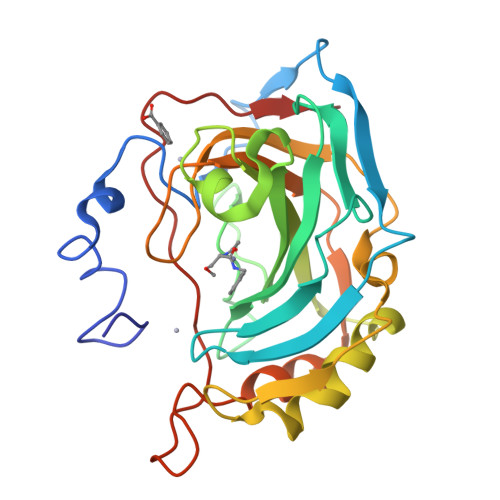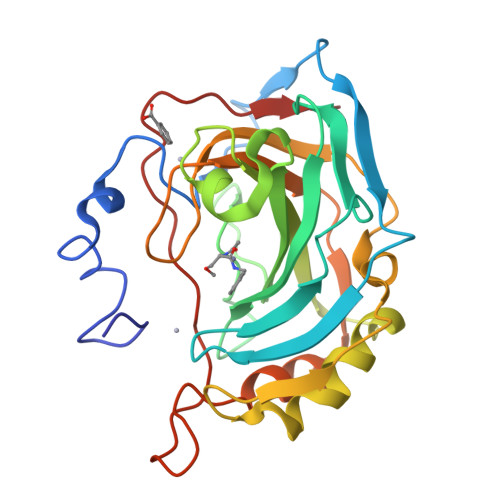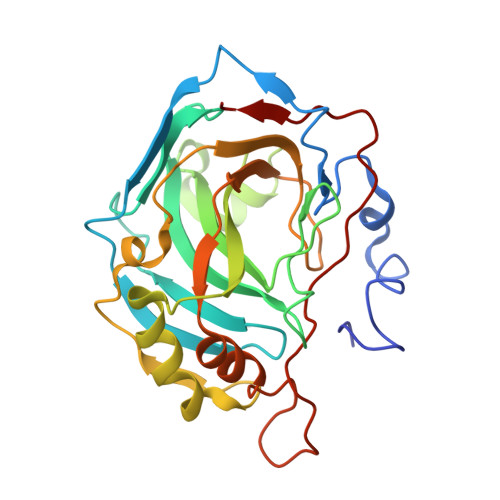The coumarin-binding site in carbonic anhydrase accommodates structurally diverse inhibitors: the antiepileptic lacosamide as an example and lead molecule for novel classes of carbonic anhydrase inhibitors
Temperini, C., Innocenti, A., Scozzafava, A., Parkkila, S., Supuran, C.T.(2010) J Med Chem 53: 850-854
- PubMed: 20028100
- DOI: https://doi.org/10.1021/jm901524f
- Primary Citation of Related Structures:
3IEO - PubMed Abstract:
Coumarins constitute a general and totally new class of inhibitors of the zinc enzyme carbonic anhydrase (CA, EC 4.2.1.1), binding at the entrance of the active site cavity. We report here that the coumarin-binding site in CAs may interact with diverse compounds, such as the antiepileptic drug lacosamide, which inhibits mammalian CAs I-XV, with inhibition constants in range of 331 nM to 4.56 microM. Its X-ray crystal structure in adduct with CA II reveals the molecular basis for this inhibition. Lacosamide was found in the coumarin-binding site, making favorable van der Waals interactions with Thr200, Asn67, Gln92, and Phe131. No interactions with the Zn(II) ion were evidenced in the CA II-lacosamide adduct. The coumarin-binding site may thus accommodate structurally diverse compounds which possess an inhibition mechanism distinct of that of sulfonamides. This finding opens new possibilities for designing CA inhibitors/activators with various biomedical applications.
Organizational Affiliation:
Università degli Studi di Firenze, Laboratorio di Chimica Bioinorganica, Rm. 188, Via della Lastruccia 3, I-50019 Sesto Fiorentino (Firenze), Italy.




















